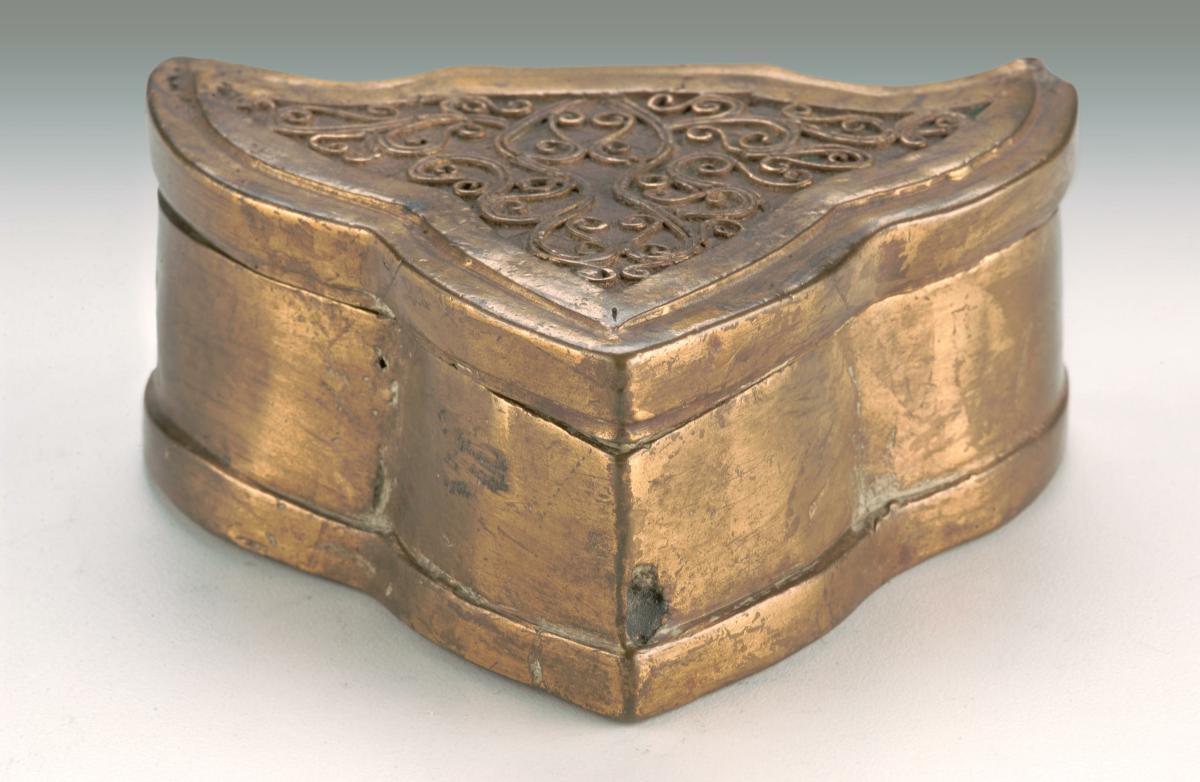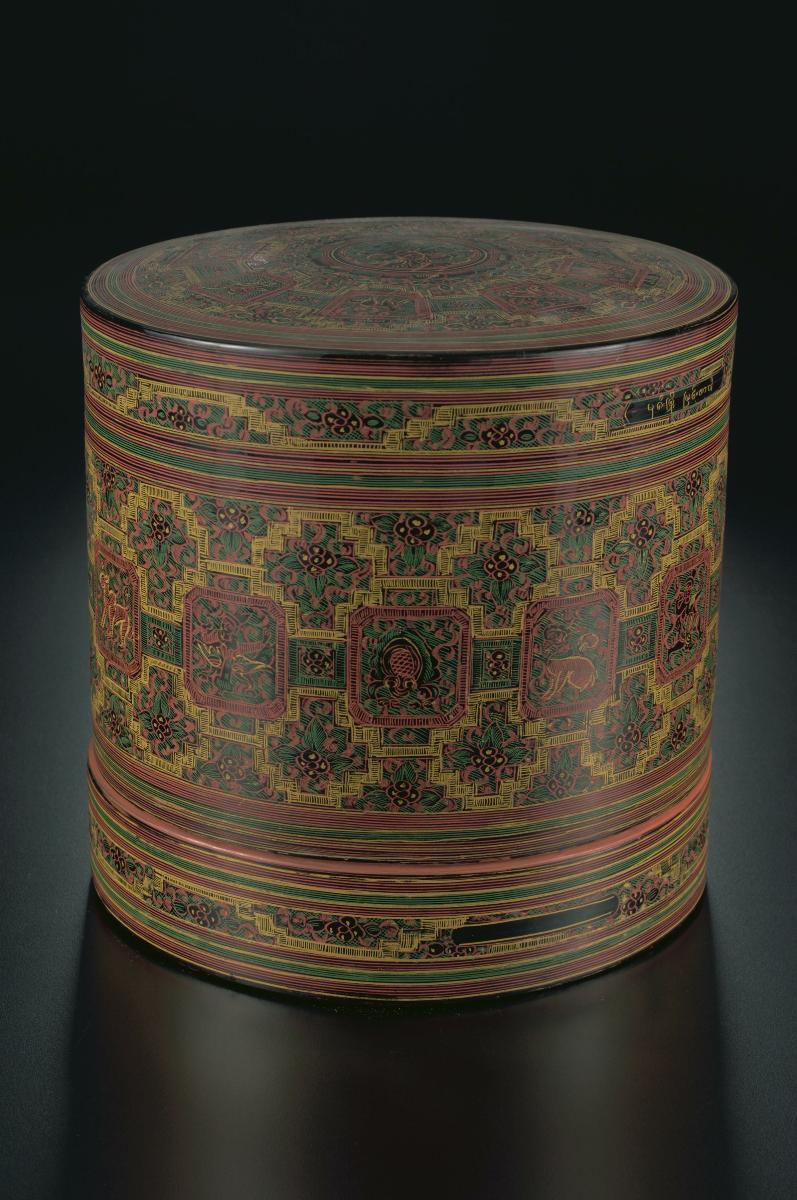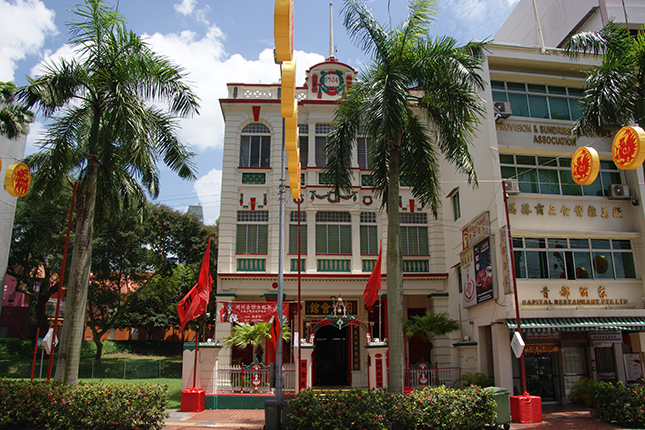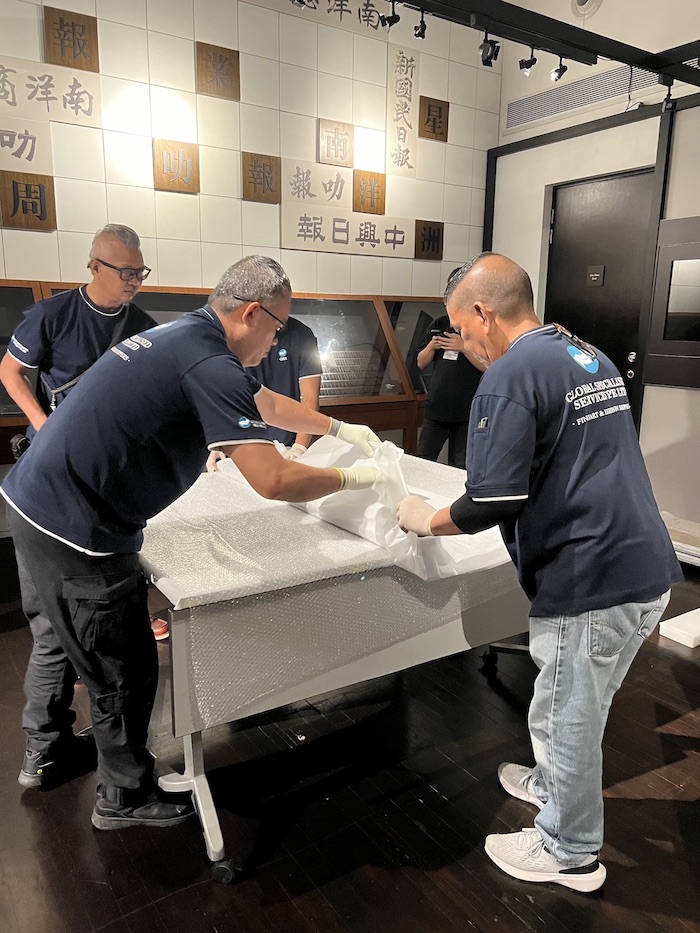Object size: 1992-00734-001: H:21.5 x Dia:26.5 cm,
Object size: 1992-00734-002: H:6.5 x Dia:25.5 cm,
Object size: 1992-00734-003: H:8.5 x Dia:26 cm,
Object size: 1992-00734-004: H:18.3 x Dia:26.7 cm
This 'kun-it' or betel box is the most popular type of lacquerware in Myanmar (Burma). It is cylindrical in form, made of woven bamboo and the interior is fitted with one or two shallow trays to hold the ingredients for a betel chew. A deep cover sits on the sides to keep the contents fresh. The box has five different colours including red, black, yellow, green and orange. It is elaborately decorated with fine 'yun' or incised work depicting scenes from the story of Maung Byatta, the faithful servant of King Nawahrta. The legend of Maung Byatta and King Nawahrta is one of the more popular themes found on Burmese lacquerware. Inscriptions often show the date of production and the name of the craftsman or donor show that lacquer-making was probably highly recognised in the Burmese society.Lacquerware includes a wide range of utensils including water vessels, cosmetic containers, flower vases, food storage and eating utensils. It also serves a variety of important religious functions, from preserving Buddhist manuscripts, to the presentation of food to the monastery.


















